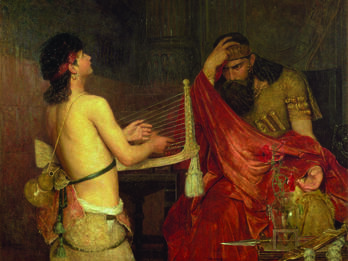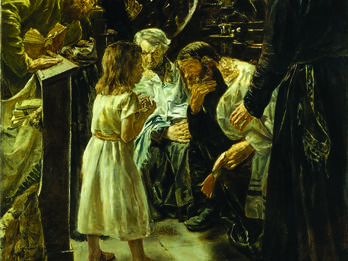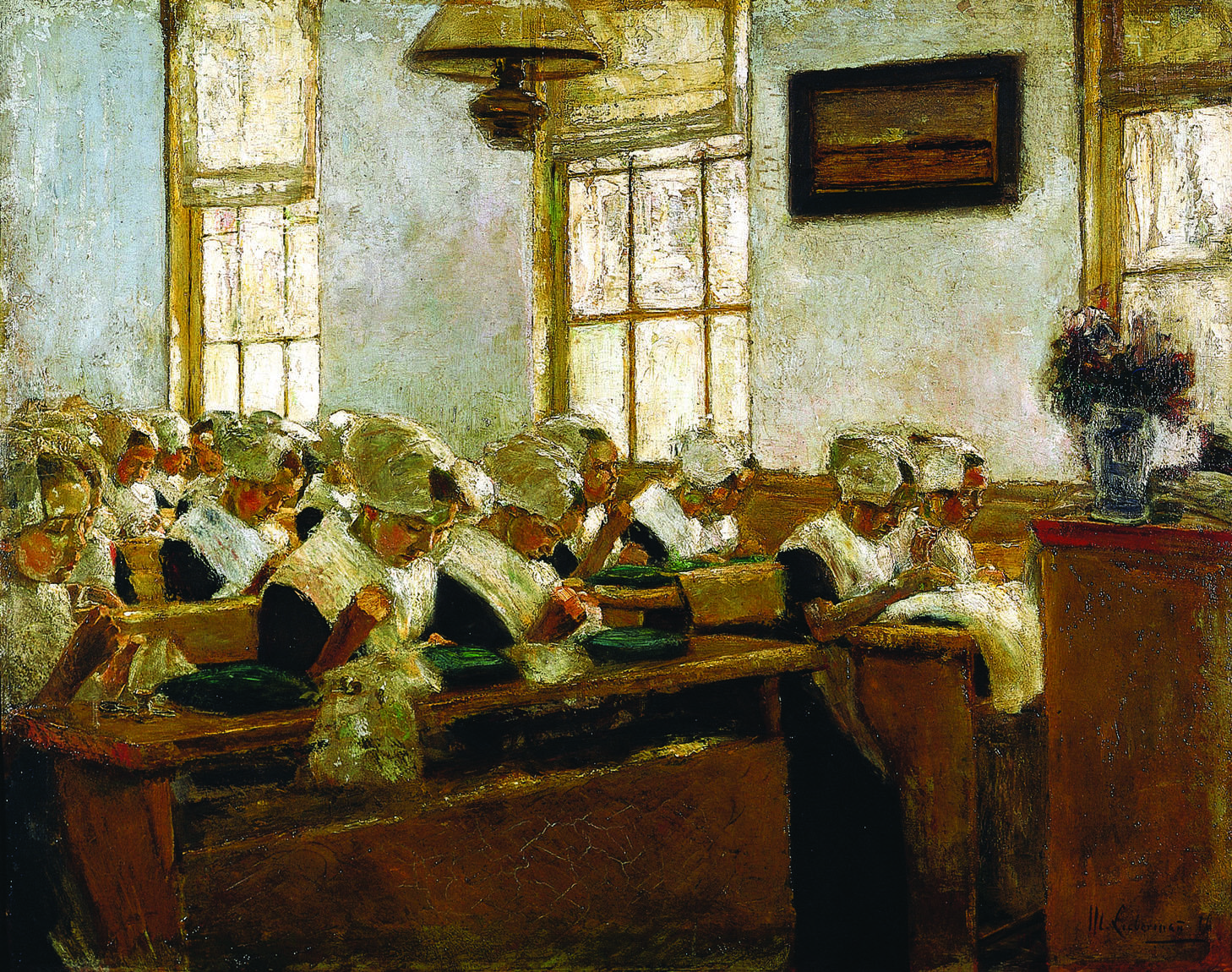The Dutch Sewing School
Max Liebermann
1876
The Dutch Sewing School is from a period in Max Liebermann’s career when Dutch peasants were a common subject in his work. The sewing school seen here was in an orphanage in Amsterdam. While he started his career as a realist painter, by the time he created this picture, he was already beginning to paint in an impressionist style.
Credits
Von der Heydt-Museum Wuppertal.
Published in: The Posen Library of Jewish Culture and Civilization, vol. 6.
You may also like

Jewish Street in Amsterdam
Jewish Street in Amsterdam is one of the many landscapes that Tina Blau painted in her career. It is painted in the style of Austrian Stimmungsimpressionismus (atmospheric impressionism), which was…

A Road in the Woods in Summer
Camille Pissarro was notable among his fellow impressionist painters in that he often put trees at the center of his compositions instead of using them primarily as a framing device. He also…

Jews Praying in the Synagogue on Yom Kippur
The women’s prayer section depicted in this painting gives a rare glimpse into the ways that women have asserted their agency and voices even in gender-segregated spaces.

David and Saul
Ernst Josephson painted David and Saul early in his career, when he was working with mostly historical and biblical subjects. Here a young, eroticized David plays a lyre for a darkly brooding King…

Christ Preaching at Capernaum
Maurycy Gottlieb saw his art as essential to his universalist vision, namely, as a way to improve Polish-Jewish relations. As he said, “I am a Jew and a Pole and, God willing, I want to serve both.”…

The Twelve-Year-Old Jesus in the Temple with the Scholars
When Max Liebermann first exhibited this painting, it caused not only a sensation but a scandal. Some critics objected to a Jew daring to depict Jesus, and they were offended by Liebermann’s realistic…
Engage with this Source
Creator Bio
Max Liebermann
1847–1935
Max Liebermann, the son of a wealthy Berlin Jewish family, was a dominant figure in the German art world in the late-Imperial- and Weimar periods. He initially painted Dutch peasants in a realist style, then led the antiestablishment naturalist movement in the 1880s and 1890s, and, after 1895, worked for many years in an impressionist style. He was famous for his portraits and his scenes of bourgeois life. Liebermann helped found and served as the president of the progressive Berlin Secession from 1898 to 1910 and was president of the Prussian Academy of Arts from 1920 until Hitler’s rise to power in 1933, when Liebermann was forced to resign his position.
Public Access
Image
Places:
You may also like

Jewish Street in Amsterdam
Jewish Street in Amsterdam is one of the many landscapes that Tina Blau painted in her career. It is painted in the style of Austrian Stimmungsimpressionismus (atmospheric impressionism), which was…

A Road in the Woods in Summer
Camille Pissarro was notable among his fellow impressionist painters in that he often put trees at the center of his compositions instead of using them primarily as a framing device. He also…

Jews Praying in the Synagogue on Yom Kippur
The women’s prayer section depicted in this painting gives a rare glimpse into the ways that women have asserted their agency and voices even in gender-segregated spaces.

David and Saul
Ernst Josephson painted David and Saul early in his career, when he was working with mostly historical and biblical subjects. Here a young, eroticized David plays a lyre for a darkly brooding King…

Christ Preaching at Capernaum
Maurycy Gottlieb saw his art as essential to his universalist vision, namely, as a way to improve Polish-Jewish relations. As he said, “I am a Jew and a Pole and, God willing, I want to serve both.”…

The Twelve-Year-Old Jesus in the Temple with the Scholars
When Max Liebermann first exhibited this painting, it caused not only a sensation but a scandal. Some critics objected to a Jew daring to depict Jesus, and they were offended by Liebermann’s realistic…


